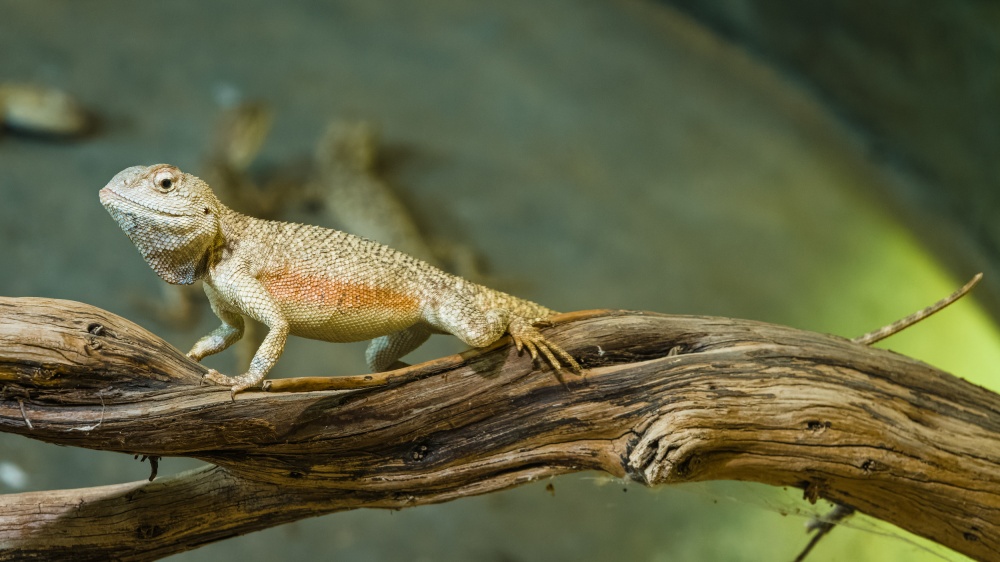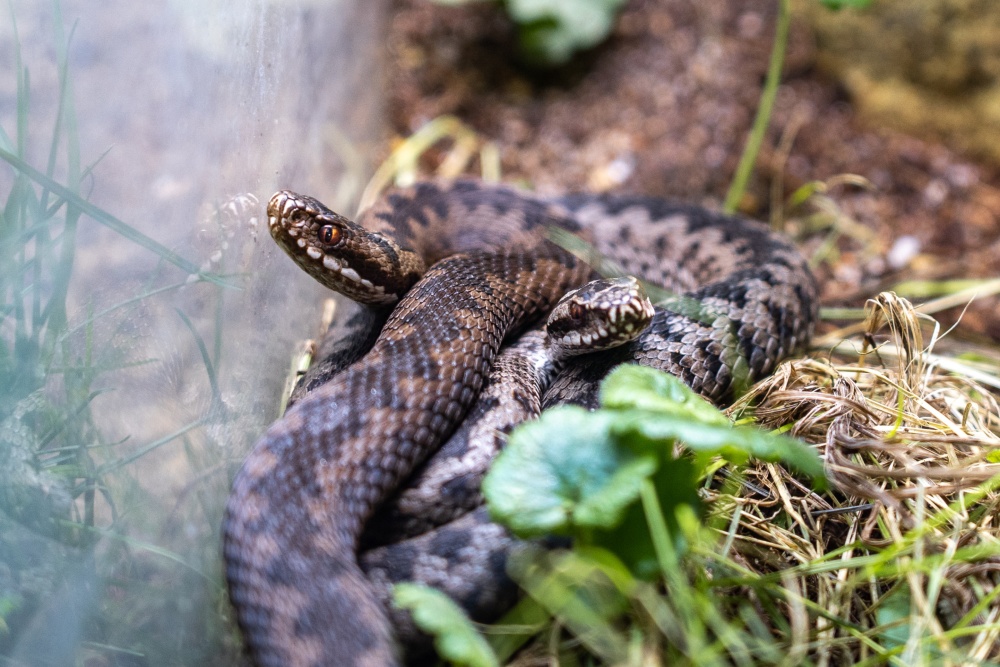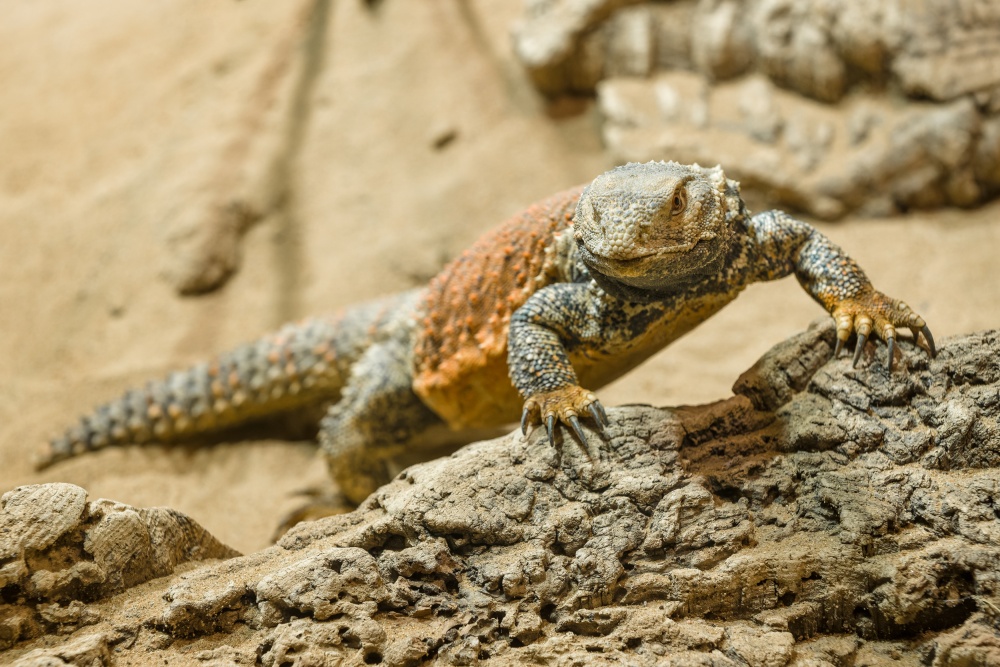Spring is here for Prague Zoo´s reptiles
10. 02. 2022
Although the temperatures outside are just a few degrees above zero, Prague Zoo’s keepers are already ending the terrarium inhabitants’ brumation by gradually increasing the light and warming up the exhibits. The reptiles are waking up from their winter rest and for them spring is all about colourful courtship.

During courtship, male desert lizards often put on colourful attire for courtship and display a variety of impressive behaviours. Pictured here is a male steppe agama. Photo Petr Hamerník, Prague Zoo
“Brumation, the winter resting period, is part of the natural rhythm of temperate and subtropical reptiles. It increases their vitality and is often a precondition for successful reproduction. The length of this period varies for reptiles from different latitudes, but we usually get the reptiles ready during autumn and end brumation at the start of February,” explained reptile curator Petr Velenský.
The keepers winter some reptiles directly in their indoor exhibits, where they induce brumation by gradually dimming the lights and turning off all heat sources, which they augment by cooling the rooms with air blown in from outside, or by setting the air conditioning to 15 °C. This is how, for example, desert reptiles hibernate in the Felines and Reptiles Pavilion or vipers and grass snakes in the Terrarium’s Czech snakes section.
If suitable conditions cannot be provided directly in the exhibits, e.g. for Mediterranean snakes and other reptiles, then they are placed in the wine cellar. This ensures both the temperature and humidity are just right.

"Brumation is always a risky time in a reptile’s life, finding the right balance of temperature, humidity and ventilation is not easy. Recently they have been doing very well in the wine cellar, this is because wine is also a living organism and a good wine cellar must keep the correct microclimate,” said Velenský, explaining how wintering conditions are set up.
The final way is brumation in specially prepared wintering areas for the outdoor expositions. This is how the reptiles on the Zakázanka path make it through the winter naturally. Visitors will have to wait a few weeks for them to become active.
In the indoor exhibitions, keepers are now gradually turning the lights back on and switching on heat sources to artificially extend the length of the day. This wakes the animals from their winter dormancy.

“As soon as the reptiles warm up to their normal temperature, frenetic activity breaks out - first a scramble for food, then courting and mating. Male desert lizards often adorn themselves in colourful attire and put on a gamut of impressive behaviours during courtship. In their endeavours to woo a female, they jump around, bob the front of their bodies and curl their tails,” said Velenský, inviting you to an unusual spectacle.
For many male reptiles, courtship is accompanied by an intensification of colour, or even a complete change in colour, which can currently be observed in desert lizards in the Feline and Reptile Pavilion. An example is the Iraqi mastigure, with a red caparison extending over its back, or the male steppe agama with a combination of white, blue and purple. In the Czech snakes exhibition in the Terrarium, the male adder, which mates immediately after wintering, also puts on a distinctive seasonal colour change.








